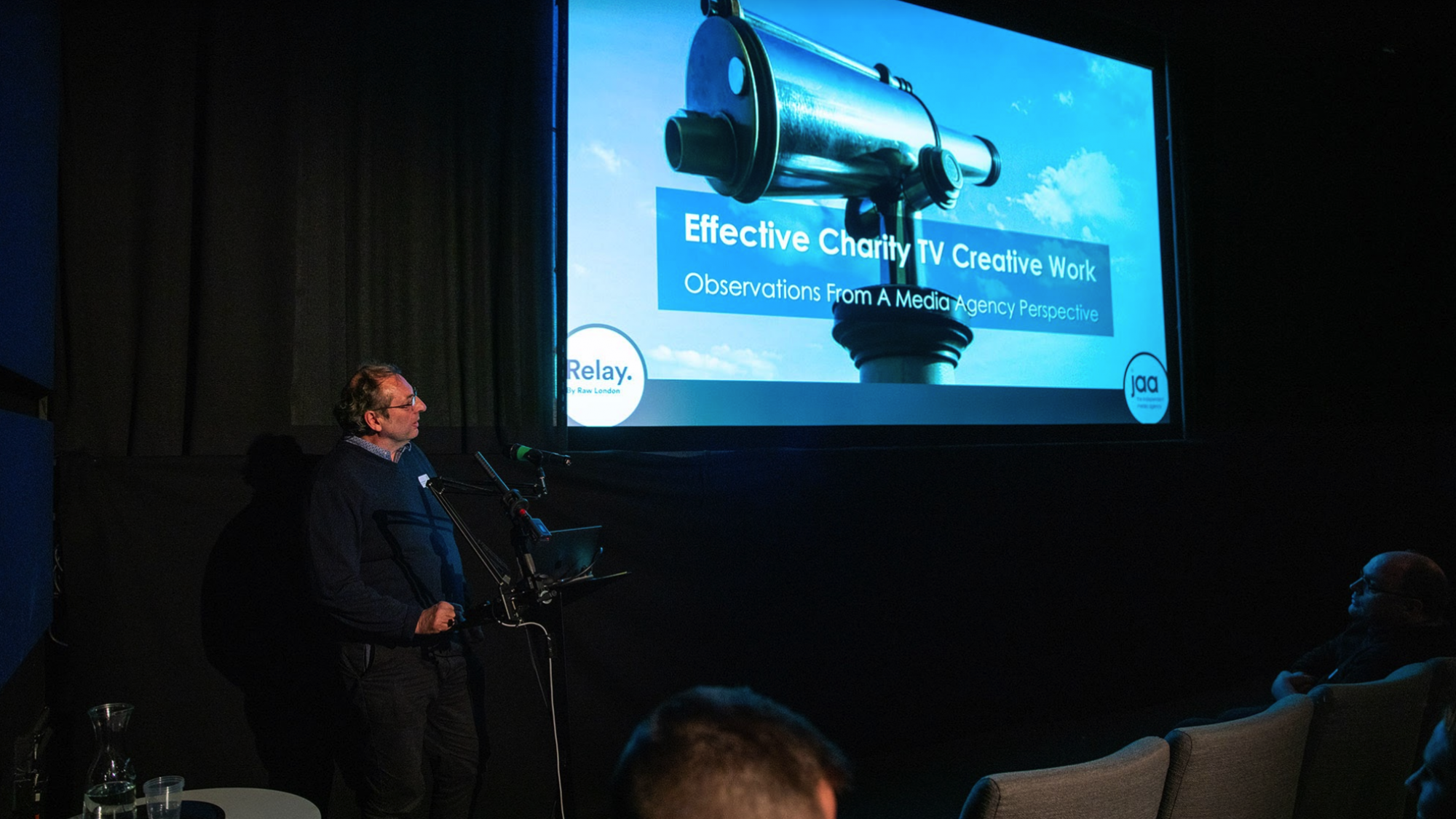

There is a general mood in the industry that fundraising is moving on from TV and going in a slightly different direction. However, Rob Stephens, CEO at JAA Media, argues that TV is still effective and will continue to play a big part of fundraising for the foreseeable future – if you do it in the right way. This is a summary of his session from our latest Relay event, Grow Your Giving: How cutting-edge creative is driving fundraising in 2020.
Update (30 April 2020): It is with great sadness that Rob Stephens, CEO at JAA Media, passed away last week. Our thoughts are with his family, friends and colleagues. Rob was an absolute delight to work with, and brought invaluable experience, insight and support to the third sector.
Paul de Gregario, Founder of Rally, said that “the future is more about community building and engagement than broadcast advertising”. However, the fact is that there has been a significant growth in charities using TV every year over the last 5 years, proving it’s still in strong demand.
This is because TV can and does work still for donor recruitment. In fact, nothing else matches it’s efficiency at scale. This means that, while spending money on digital can be effective, it does not deliver results at scale in the same way TV does.
There are some key considerations, of course. Changing audience behaviours mean it’s no longer enough just to have a great advert, and it’s crucial to think about the whole journey in order to drive real results.
TV fundraising is a huge subject, but there are some basic principles to bear in mind.
Disaster and emergency generates the best return on investment because it illustrates the 3 primary drivers to reason to donate:
While these drivers are most obvious in disaster and emergency, you can leverage and optimise your position against each of those criteria, regardless of the charity.
A good example of a small charity using TV to raise a leveraging empathy and urgency, even with little to no awareness, is the Donkey Sanctuary. This campaign demonstrates the need and cause with amazing simplicity, using the TV platform to build audience trust.
Empathy is about helping audiences identify with an individual, rather than the broad knowledge of a situation. All the best creative nearly always has the opportunity to empathise with an individual human or animal. For example, this is a Plan UK ad from 2017 engages the viewer by giving the illusion of eye to eye contact – which has proven to be a really critical driver.
For some charities, where the need is ongoing, it can be difficult to communicate the urgency of the need. For example, Macmillan incorporated urgency to improve the response rate by saying ‘Urgent appeal – help provide more Macmillan nurses’. This evoked a powerful emotion, encouraging people to act quickly and converting while they’re still engaged.
There are also some key facilitators that create the smoothest possible path to donation.
Accessible engagement is about giving people the option to engage with the charity in the way they want to – and make it easy for them to do that. This means making all relevant response channels available, then testing, learning and adapting the strategy based on what works best for your audience.
People want to be able to give in different ways, so offer choice and evolve as the programme goes on. At the heart of most regular giving programmes, the traditional ‘Dorothy Donor’ persona is still the primary source of donations. However, there are other groups – for example, younger audiences who may want to donate through their mobile phone. It’s key to understand how to engage each group.
When you advertise offline, the vast majority of responses come in online, so it’s crucial to have a user friendly and conversion-focused online journey. For example, ensure that your audiences’ online experience reflects and is a continuation of their TV experience, including same imagery, stories, and simple mechanics like asking for the same donation amount.